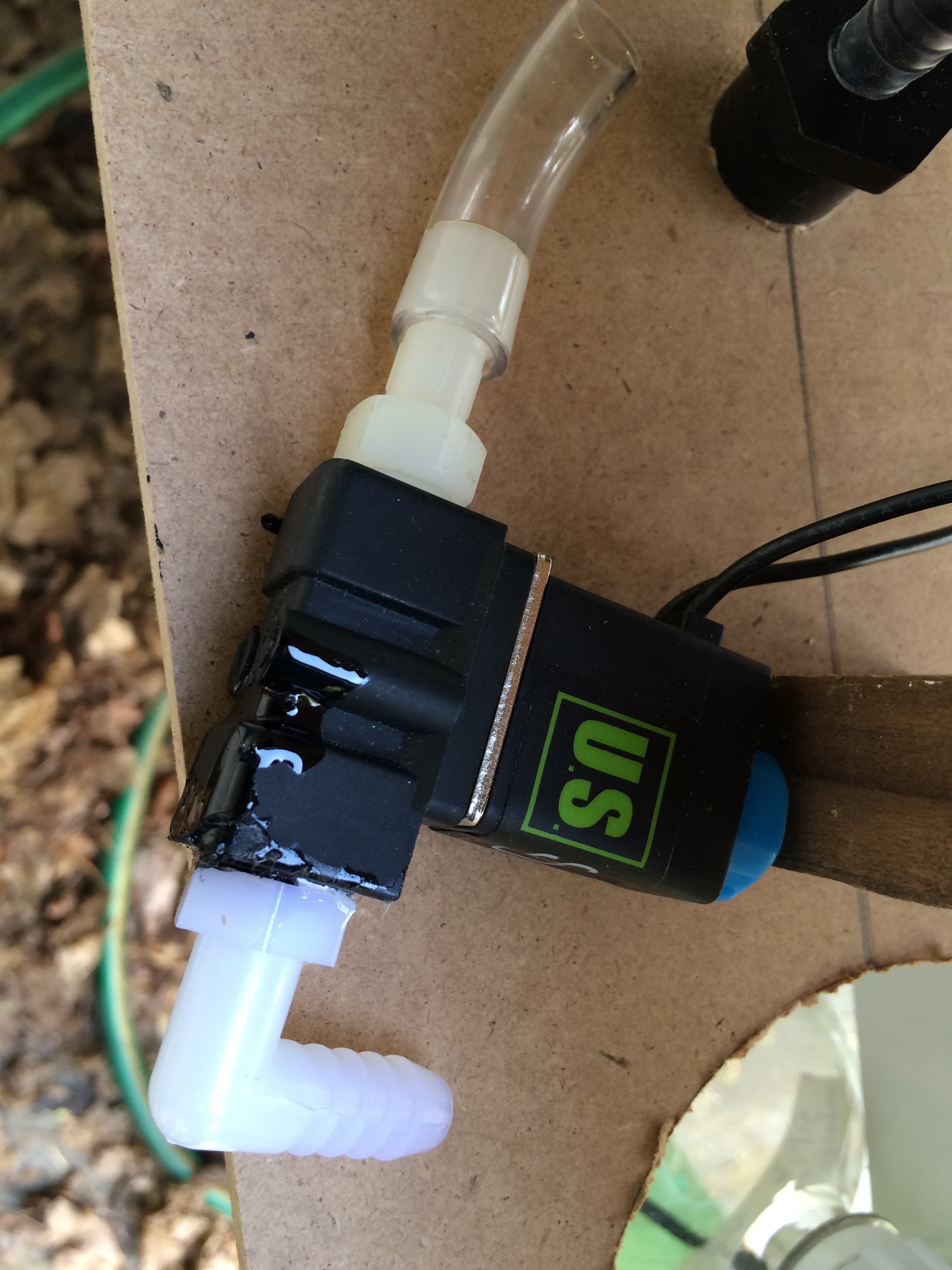I've built many contraptions over my forty-some years. And I'm a bit surprised that, to date, none of them have really involved pumps. Okay, there was that one "hey, we have some high power sump pumps from the flood, and a kids' pool, and some steel pipe, and - look at this! - a KID, so let's turn this in to a fountain and see if we can spray water higher than the house." Which is related to the "pump all the water out of the basement for a week" project. Which is related to the "what do you mean the pump overheated?" project. But none of those involved any real logic; they were just pipe - turn on - enjoy. Or, hope to enjoy.
So when I started this project I knew just about bupkis about pumps and solenoid valves. Sure, I know what they do. I know about diaphragm pumps, piston pumps, peristaltic pumps. I know how these things work. I've just never had to specify that pump "A" was the right pump for job "B". And I've sure as hell never had to pick a solenoid valve. Or six.
But I know a lot about the chemicals I want to pump around this thing. I know that photographic fixer will happily eat away silver - as it's intended. And also copper and steel, amongst other metals. Plastic, then, is the name of the game.
I figure that I need to move about 1L of chemistry in under a minute; 30 seconds being my target. Based on those two specs alone, I picked a pump. Well, two pumps: one for each direction.
Seaflo New 12V Water Pressure Diaphragm Pump 4.3 L/min 1.2 GPM 35 PSI Caravan/RV/Boat/Marine
... or so it says. This thing is designed to put positive pressure out the front end, with an automatic cutoff, so that you can use it to pressurize a faucet in an RV. The pump pumps up the pressure and turns off; you later open the tap; water starts to flow out because of the pressure in the line; then the pump kicks back in to keep the water flowing. Seems pretty good to me! Should have my liter of soup moved in seconds, easily.
It turns out that these pumps are pretty good for my task (I got lucky). They're not quite as fast as I'd like, but this (as you'll soon see) are due to engineering difficulties rather than the pumps themselves.
Next up are the solenoids. I drew up a quick flow diagram to figure out how I'd make this all work, and quickly realized I'd need 6: one for each motor direction; one for each of the three supply tanks; and one for a waste line. I picked something that looked like it might do the job, based on nothing other than the 12v supply.
-NEW- Solenoid Valve 1/4" Normally Closed (N.C.) 12VDC Nylon (NEW Improved Crack-resistant Polymer) Blue Cap by U.S. Solid

To run all of this, I figured I would throw in a Moteino with an RFM69. This would let me put most of the electronics onboard in some waterproof and safe way, and take the controls off to some safe remote location. Not to mention that, as you might suspect by now, I had some Moteinos close at hand and I'd rather use the what-I-have. I'm really liking the remote programming of these devices, which also means I can close up the circuitry and program them over the air. Very, very convenient - and having to use the Arduino IDE-from-hell is a minor price to pay.
For relays, rather than rolling my own - knowing I was on a tight schedule to get this done, prep the actual tintype plates, and have it all come together for a real honest-to-goodness photo shoot - I bought a
JBtek 8 Channel DC 5V Relay Module for Arduino Raspberry Pi DSP AVR PIC ARM
NEWSTYLE AC 110V-220V to 12V 10A DC 120W Switching Power Supply Transformer For LED CCTV
sitting around. 4A isn't the 10A I had expected, but it's probably good enough. And, HEY!, it's in my house already. AND IT WORKS AT 12v.
The last piece of electronics I need is a 5v step-down regulator. I've got a pile of 7805 linear regulators in my basement, and those would do fine. I'd just have to add some filter caps, and then waterproof it in some way, and do my best to not draw so much current through it that it heats up and causes trouble. Which, if you haven't guessed, is what I've had happen with many other "I just need a simple 5v regulator so I'll build it on the fly" kinds of projects. The next thing you know, you're adding something that draws a little more, and a little more, and now suddenly that horribly inefficient linear regulator is white-hot and threatening to start forest fires or go mini-nova and melt down the planet or something.
For once, I did the smart thing. I bought a
 Jorj Bauer
Jorj Bauer
Discussions
Become a Hackaday.io Member
Create an account to leave a comment. Already have an account? Log In.